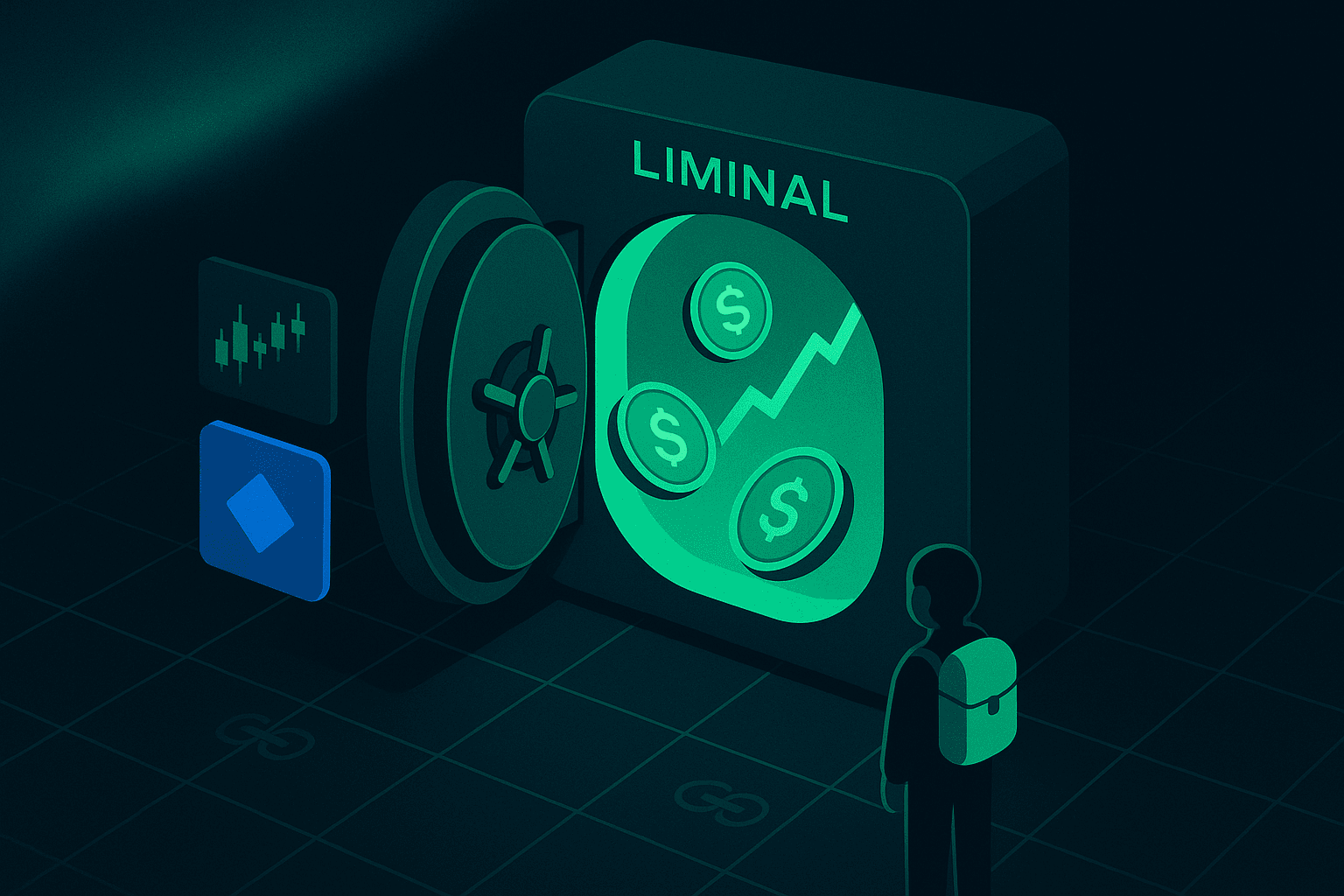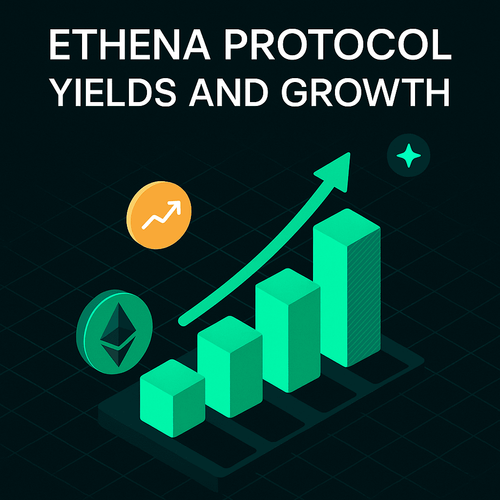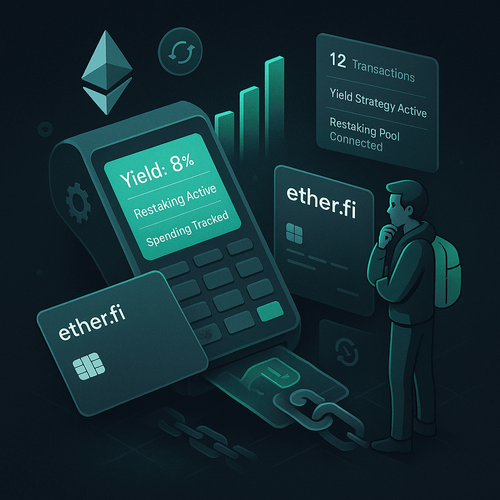Why Funding Rate Arbitrage Matters Now
In bullish markets, traders tend to pay elevated funding fees to hold leveraged long positions. This creates an opportunity for yield seekers: by taking the opposite side of those trades, one can earn interest from funding payments. Protocols like Ethena have already popularized this concept, delivering competitive yields on stable assets by capturing exchange funding rates. Liminal enters the scene with a similar delta-neutral strategy but aims to amplify yields even further by leveraging Hyperliquid. The result is a yield product that, in recent months, has historically achieved double-digit APY, far outpacing traditional DeFi vanilla lending rates (i.e Aave’s ~3.8% on USDC). Liminal’s yield is directly correlated with funding rates while avoiding direct market exposure through its delta neutral strategies. This report covers Liminal because of the setup: a double digit yield on a delta neutral strategy of a pre-token protocol that tends to trend with the bull market funding rate.
What Liminal Is and How It Works
Liminal is a delta-neutral yield protocol built on Hyperliquid. In simple terms, it lets you deposit stablecoins (USDC) and earn “real yield” without price volatility. It does this through an automated carry trade: it takes a long position in the spot market and a short position of equal size in the perpetual futures market. This hedged position cancels out price movements, so whether the underlying asset goes up or down, your capital’s value remains stable. Meanwhile, perpetual swap funding fees are collected as yield. Liminal handles all of this behind the scenes, users simply deposit USDC and the protocol takes care of trading, rebalancing, and risk management automatically.
Liminal runs natively on Hyperliquid, which provides the underlying liquidity and low-latency trade execution. This infrastructure and liquidity is crucial, it means Liminal can enter and exit positions with minimal slippage and handle rapid rebalancing in real time. As for the vault, Liminal’s engine allocates the deposited funds to open up hedged positions on Hyperliquid and continuously monitors them. All funding payments earned are passed back to depositors as yield (minus a 10% performance fee on the net funding earned), while the system actively manages margins and rebalances to help avoid liquidations. In short, users deposit USDC and Liminal actively manages the carry trade on behalf of depositors.
Key Features and Advantages
Liminal is an actively managed protocol and provides access to real yield to one of crypto’s largest products — perpetual futures.
- Real Yield, Not Emissions: Unlike many DeFi yields subsidized by inflationary token rewards, Liminal’s returns come from actual market demand. It captures funding fees paid by traders on perp markets, so the yield is very transparent and organically tied to trading activity. There are no token incentives or dilution, what you earn is “native” yield from the market itself.
- Delta-Neutral, Market-Agnostic: The strategy is market-neutral, meaning your deposit is not exposed to crypto price swings. Whether Bitcoin soars or dips, a Liminal position remains balanced. This gives peace of mind that you’re not risking capital on directional bets, you’re simply harvesting the “carry” from perpetual swaps. However, if the market cools off, the yields generated from Liminal will likely go down as well. If there is a sudden sharp dip, it can even cause the yield to be negative at times.
- Automated and User-Friendly: Liminal brings what used to be a complex, institutional trading strategy to any user with a few clicks. No trading expertise or active management is required. The protocol automatically handles position entry, rebalancing, and risk adjustments in real time. This makes it a “set-and-forget” yield solution for passive investors.
- Competitive Yields: Liminal has been delivering higher APYs than typical onchain yield platforms. For example, as mentioned, lending protocols like Aave pay ~3.8% on USDC. Liminal, by directly arbitraging Hyperliquid’s funding, has recently achieved annualized yields in the mid-teens ~15% APY. These rates will fluctuate with market conditions, but clearly illustrate the advantages of funding rate arbitrage in a trending market.
- Low Leverage and Liquidation Safety: The platform prioritizes safety by using low leverage levels on positions and actively avoiding liquidations. The strategy is designed such that even if funding is being captured, it doesn’t aggressively lever up. Liminal’s Liquidity Engine constantly monitors positions and will reduce or close them preemptively if they ever get close to a liquidation threshold, preserving user capital.
- No Lockups, Full Flexibility: Users can withdraw their funds at any time given there are no fixed lockup periods or vesting. Your balance within Liminal is updated in real time, and you retain control. For regular users, deposits are managed via secure externally owned accounts (EOAs) that Liminal controls on Hyperliquid, but you can pull out whenever you choose. The protocol imposes no exit fees or delays beyond what’s needed to safely unwind your positions. This liquidity is a big advantage for investors who want yield with the option to exit quickly.
- Transparent and Aligned Incentives: All of Liminal’s activities occur onchain (on Hyperliquid’s ledger), and the app provides a “Verify” button to view execution data for transparency. Importantly, Liminal’s fee model is performance-based as it charges a 10% performance fee on net funding profits only. In other words, if your strategy doesn’t make money, you pay nothing. This aligns the protocol’s incentives with users: Liminal only earns when the users earn. There are no management fees or hidden costs eating into yield.
- Advanced Customization (Optional): While the default mode is simple, Liminal also offers a Pro interface for power users. In Pro mode, you can tweak your strategy. For example, one can choose which assets’ funding rates to farm and allocate your capital across them. You can even apply a bit of leverage (i.e 1.5× or 2×) to increase capital efficiency and boost yields, within preset limits. These features allow more sophisticated investors to optimize returns, while still relying on Liminal for execution.
Risks and Considerations
No yield comes without risk, even if market exposure is hedged. Liminal’s strategy is market-neutral but not risk-free. One key consideration is funding rate volatility. Funding fees are dynamic and can turn negative in certain market conditions. For example, in a sharp bear turn, short traders might demand payments from longs (negative funding), which would mean Liminal’s position has to pay rather than earn. Historically, such periods tend to be short-lived and funding averages remain net positive over time, but it’s possible for yields to drop to zero or slightly negative temporarily. The protocol mitigates this by allowing users to switch assets or withdraw if the outlook deteriorates, and by not charging any fee unless there are positive returns.
Platform and technical risk should also be weighed. Liminal is entirely built on Hyperliquid’s infrastructure. If Hyperliquid has downtime, performance issues, or security failures, Liminal would be directly impacted. So far Hyperliquid has proven robust, but reliance on a newer exchange poses additional operational risk as it depends on Hyperliquid’s reliability.
Lastly, because Liminal manages positions for users via its own secure accounts, there is an element of custody trust, given depositors are trusting Liminal’s system to hold and deploy user funds correctly. The team has implemented strong safeguards (secure enclaves for keys, AES-256 encryption, etc.) and even offers a self-custody option (Institutional Mode) for those depositing larger amounts or requiring full control. In Institutional Mode, Liminal trades on your own Hyperliquid sub-account via an agent, so it cannot withdraw your funds, only execute trades on your behalf. This feature, however, is currently limited to users with high volume and is optional. Of course, all users should do their due diligence on the platform and the actual execution risk of the strategies employed by Liminal.
Conclusion
Liminal presents an actionable opportunity for investors to earn yield from real market activity. By arbitraging perpetual funding rates, it channels the heightened demand for leverage in a bull market into competitive returns for depositors. The protocol’s ease of use (just deposit USDC and earn) and transparent, performance-aligned fee model make it a compelling alternative to current DeFi yield farms. As always, investors should be mindful of the risks (funding rate fluctuations, platform dependence, strategy risk), but Liminal’s design and track record so far demonstrate a thoughtful approach to minimizing these risks. In summary, for those looking to put idle stablecoins to work, Liminal offers a hands-off way to capture “real yield” that rides the momentum of the funding rate market.




